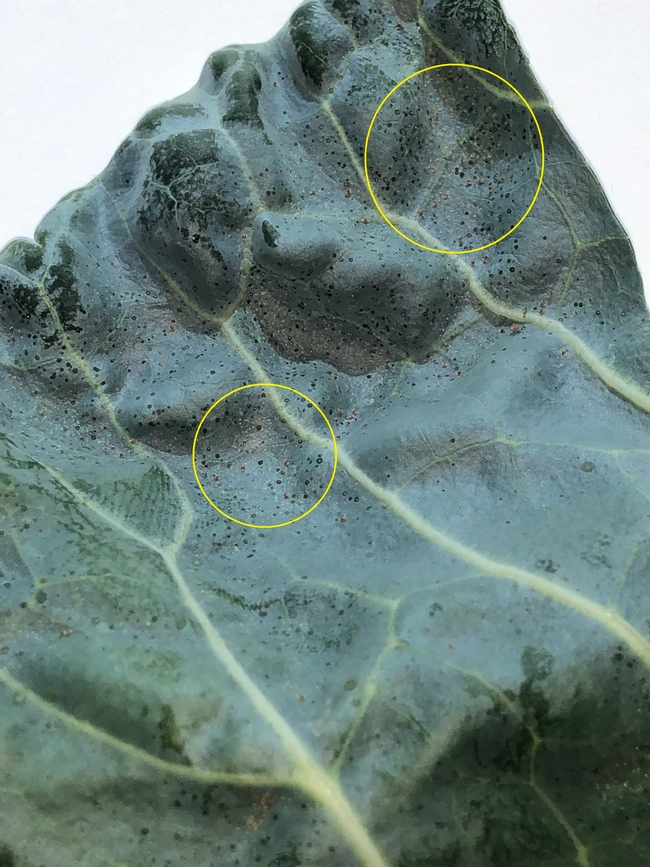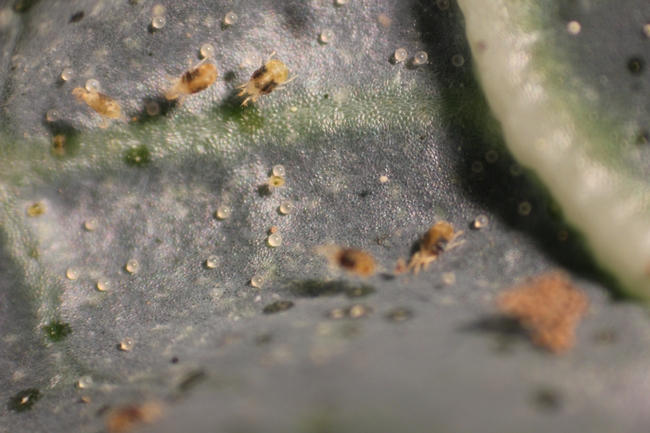On Wednesday October 9th, a Brussels sprout plant sample was submitted to our Entomology laboratory for insect identification.
At the naked eye, we observed some webbing and specks on the leaf (See Fig. 1).
Fig. 1. Leaf of Brussels sprout showing some webbing and 'specks'. Affected areas are highlighted with the yellow circles.
Under magnification, we were able to see eggs, nymphs and adults of the two spotted spider mite (TSSM), Tetranychus urticae (See Fig. 2). Adults of these specimens have the two black spots on the lateral sides of the anterior end of the podosoma, the area located below their mouth parts.
Fig. 2. Eggs, nymphs and adults of two spotted spider mites on the leaf of Brussels sprout.
TSSM is one of the most polyphagous mites, having several host plants around the world. Females disperse by putting silk strands right after mating and before producing eggs. Dispersing females climb to the top of the plant and specimens are carried out by the wind. This phenomenon called ballooning, aids mites to float through the air and disperse longer distances to reach favorable host plants.
It is highly advised that Brussels sprout growers and PCAs walking this crop, pay close attention to leaves within the canopy to potentially identify the presence of TSSW in this crop.
If you believe you may have TSSM in your Brussels sprouts, please send us a plant sample at 1432 Abbott St. in Salinas for confirming identification (free service), or call us at 831-759-7359 to obtain additional information on this pest.

